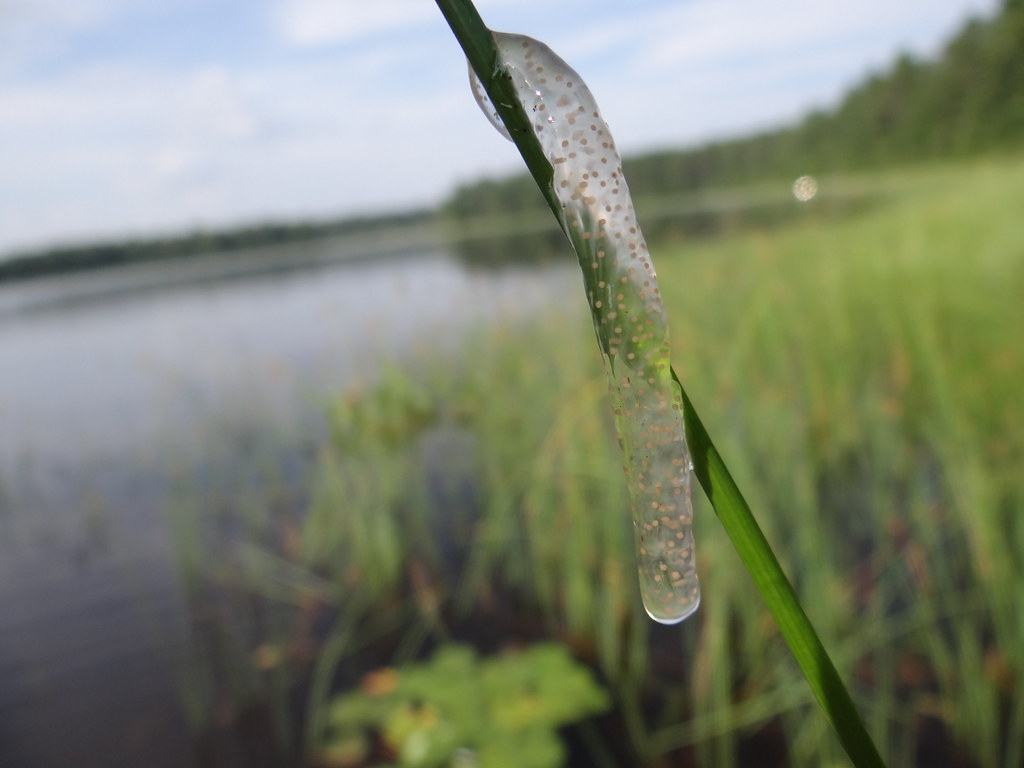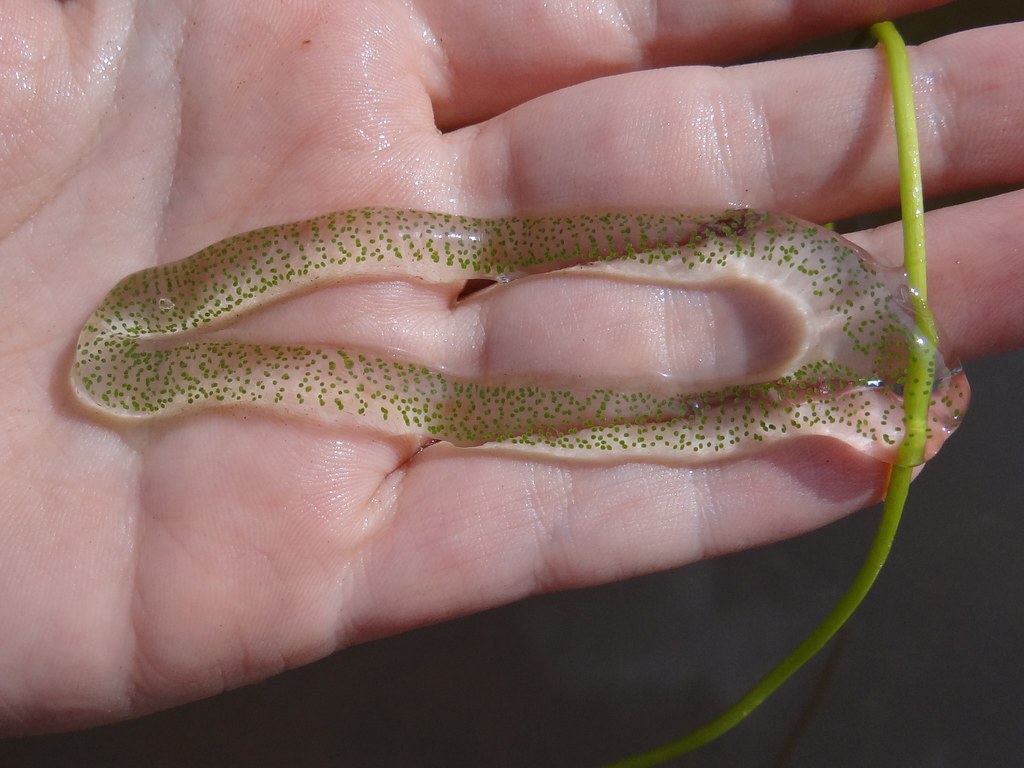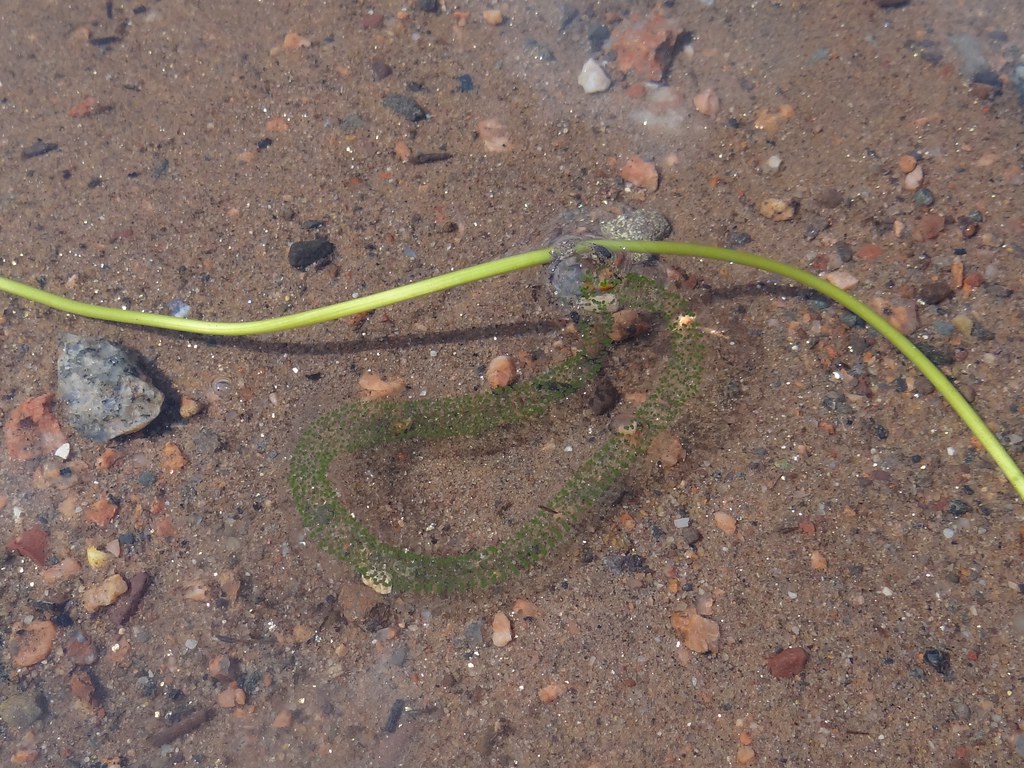One was found above the water attached to a juncus stem and the other was found in the water attached to vegetation.

Gelatinous Goo on Lakeshore Vegetation by corey.raimond, on Flickr

Gelatinous Ring Attached Underwater to a Water Lily Stalk by corey.raimond, on Flickr

Gelatinous Ring Attached Underwater to a Water Lily Stalk by corey.raimond, on Flickr
Thanks,
-Corey







